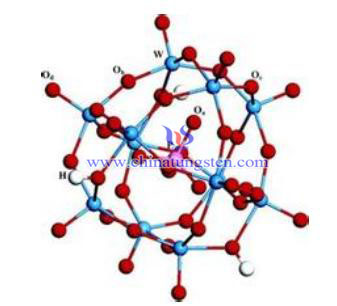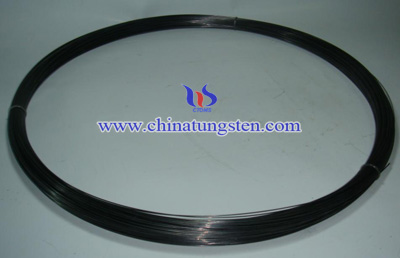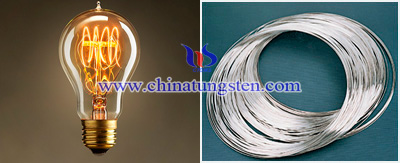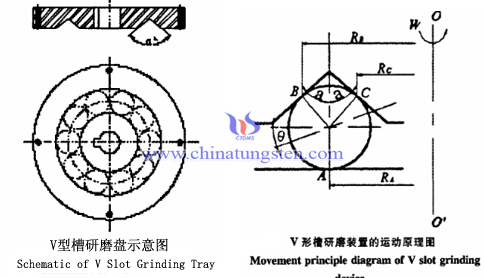Intermediate Compound of Tungsten - Ammonium Paratungstate
- Details
- Category: Tungsten Information
- Published on Friday, 29 January 2016 19:45
Ammonium paratungstate (APT) is a primary product of tungsten, which is an important raw material for the manufacture of tungsten products and hard alloy. Also it’s the most common tungsten compound, and widely used in tungsten smelting. The quality of APT determines properties and quality of tungsten products in a large extent. WO3, blue tungsten oxide, tungsten acid, ammonium metatungstate can be generated through partly or completely heating. APT is a white transparent crystal with good loose and mobility. APT will begin to loose ammonia when heated in the air up to 60℃, begin to dehydration at 100℃, and begin to turn into yellow tungsten oxide at 450℃. APT is completely converted into blue tungsten oxide When heated to 300℃ in hydrogen, and turned into violet tungsten at 400℃, trioxide at 500 to 600℃, and turned into tungsten powder when the temperature reach to 600~900℃.
APT crystal powder can be prepared by evaporation of ammonium tungstate solution, the temperature supposed to be generally controlled at more than 50℃, and its particle size and composition changes with the temperature:
1. Evaporation and crystallization 80~100℃, APT present as flake crystal with 5 molecules of crystal water;
2. when the temperature is below 50℃, APT present as fine white needle crystal with 11 molecules of crystal water.
The number of water in APT crystal decided by the production conditions, and the solubility increased with temperature increasing. Heating the APT with high impurities content to get decomposition products, and then dissolve in ammonia solution, and heated at the same time, evaporate and crystallize, round cycle 1~2 times or more, then get high purity APT.
| APT Supplier: Chinatungsten Online ammonium-paratungstate.com | Tel.: 86 592 5129696; Fax: 86 592 5129797;Email:sales@chinatungsten.com |
| Tungsten News&Tungsten Prices, 3G Version: http://3g.chinatungsten.com | Molybdenum News & Molybdenum Price: http://news.molybdenum.com.cn |
Prepare Phosphato-Tungstic Acid from Ammonium Paratungstate
- Details
- Category: Tungsten Information
- Published on Friday, 29 January 2016 19:42
A method for preparing phosphato-tungstic acid by using ammonium paratungstate as raw material is proposed in this paper. The principle is: ammonium paratungstate reacts with inorganic acid to get a reactive acid precipitation, and then contacts with phosphoric acid to obtain phosphato-tungstic acid solution, crystallize and we get phosphato-tungstic acid crystal.

Specific steps are as follows:
1. Ammonium paratungstate reacts with inorganic acid to get a reactive acid precipitation;
Inorganic acid can be hydrochloric, sulfuric, nitric or hydrochloric acid, sulfuric acid and nitric acid can mix at any volume ratio, the appropriate concentration of 0.2 mol/L~6.0mol/L; the amount is optional, as long as active precipitation of phosphato-tungstic acid is able to generated; the reasonable temperature is10 ~ 40℃; reaction time for 2~5 hours;
2. Active precipitation of phosphato-tungstic acid reacts with excessive phosphoric acid solution, and get phosphato-tungstic acid solution;
3. Precipitate phosphate acid from the solution, drying and crystallizing to get the crystal.
| APT Supplier: Chinatungsten Online ammonium-paratungstate.com | Tel.: 86 592 5129696; Fax: 86 592 5129797;Email:sales@chinatungsten.com |
| Tungsten News&Tungsten Prices, 3G Version: http://3g.chinatungsten.com | Molybdenum News & Molybdenum Price: http://news.molybdenum.com.cn |
Tungsten Wire Production Processes
- Details
- Category: Tungsten Information
- Published on Friday, 29 January 2016 17:56
Tungsten wire resistivity is 5.3 * 10 ^ -8, which has a high melting point, high resistivity, good strength, low vapor pressure and other excellent performance. Tungsten wire has many different species, including black tungsten wire, white tungsten wire, stranded tungsten wire, doped tungsten wire, tungsten rhenium wire and tungsten filament and so on. It is widely used in the field of electric light sources, the main application is used for create filament and high-speed cutting steel. On the other hand, it also can be used in the field of optical and chemical instruments.
Tungsten production processes are as follows:
1. ammonium paratungstate (APT) as a raw material, which was calcined in air at about 500 ℃ to obtain tungsten trioxide.
2. Doped a certain amount of potassium oxide hydroxide, silicon oxide and aluminum oxide into tungsten trioxide, wherein the total amount of the three types doped oxide is not more than 1%, then the powder is mixed uniformly.
3. Proceeded two-steps reduction, the first step is at about 630 ℃ restore tungsten oxide to tungsten dioxide, and then at about 820 ℃ restore tungsten dioxide to tungsten powder. The purpose two-step reduction is to make potassium which is doped into tungsten powder can fully play its role, but also two-step reduction can better control the particle size of the powder.
4. Placed restored doped tungsten powder in a special mold pressed into elongate square bars. The square bars are placed in hydrogen to electrify which is using and is using resistance heating method for sintering.
5. Swaging processing, sintered tungsten bar after swaging processing become about 3mm diameter tungsten rod, then drawing by wire-drawing die so its diameter becomes finer. Tungsten rods are drawing and lubrication by tungsten carbide wire-drawing die or diamond wire-drawing die, eventually processed into different thickness of the tungsten wire.

| Tungsten Supplier: Chinatungsten Online www.chinatungsten.com | Tel.: 86 592 5129696; Fax: 86 592 5129797;Email:sales@chinatungsten.com |
| Tungsten News & Prices, 3G Version: http://3g.chinatungsten.com | Molybdenum News & Molybdenum Price: http://news.molybdenum.com.cn |
Application of Tungsten Wire
- Details
- Category: Tungsten Information
- Published on Friday, 29 January 2016 17:53
Tungsten wires as a material of electric light source play an important role in the lighting industry. The major application of tungsten wire in electric light source is lighting. Besides, the tungsten wires as light emitting body in bulbs need to add potassium oxide, silicon oxide and aluminum oxides during production processes, so tungsten wire also is known as doped tungsten wire or Not-sag tungsten wire. With the development of economy and production technology of tungsten wire, tungsten wire can be applied to ordinary light bulbs, but also can be applied to a variety of high-performance bulbs. For example, doped a certain amount of K, Al, Si and other elements into tungsten powder to produce doped tungsten wire can not only improve the color temperature of filament, the light-emitting efficiency and service life, but also the tungsten wire has good high temperature anti-sag properties therefore it can be used as a halogen lamp and other special high-temperature filament. On the other hand, added some alloy elements such as Co into doped tungsten powder can be made of high-strength shock tungsten wire for vibration environment lighting application, such as motorcycles, cars, trains, airplanes’ lighting and so on. Besides, it also can apply to military use special light bulbs and heating wire of aerospace engine heating wire.

Tungsten wires not only are widely used in the field of electric light sources also developed in other areas. Added some alloy elements into tungsten powder or doped tungsten powder such as thorium, rhenium, cerium, yttrium, lanthanum or zirconium and other elements can be made of tungsten alloy wire. Tungsten alloy wire can be used as arc welding electrodes, thermocouple, CRT cathode filament, and filament electron emission tubes, and be used in various fields.
In addition, a small amount of tungsten wire is also used as a high-temperature furnace heating material, the heater of electronic valve and strengthening rib of composites.
Tungsten wires at room temperature have good acid and alkali capacity, but are easily oxidized in moist air, so it can not be placed and stored in a humid environment for long time.
| Tungsten Supplier: Chinatungsten Online www.chinatungsten.com | Tel.: 86 592 5129696; Fax: 86 592 5129797;Email:sales@chinatungsten.com |
| Tungsten News & Prices, 3G Version: http://3g.chinatungsten.com | Molybdenum News & Molybdenum Price: http://news.molybdenum.com.cn |
Tungsten Carbide Ball V-slot Grinding (2/2)
- Details
- Category: Tungsten Information
- Published on Friday, 29 January 2016 17:46
Tungsten carbide ball V-slot grinding process has many advantages, such as even the vertical axis of nylon and other polymer materials can fully absorb drive vibration damping, thereby eliminating the impact of the grinding process; there is also a spacer ring in the periphery, so as to ensure the ball does not collide with each other, making the whole more orderly movement; since only the lower disc exercise pressure on the disc relative movement does not occur, a static pressure, more stable, and more conducive to the pressure adaption; the grinding area is relatively closed so that it is beneficial for grinding fluid mixing fully, which tungsten carbide balls are covered by grinding compound completely throughout the rotation and remarkably increasing the efficiency of grinding; the rotating speed is adjustable, the grinding compound can realize spontaneous circulation and the structure of grinding tray is simple to be replaced. It also can be manufactured according to different specifications, which greatly shorten grinding time and improve the precision of tungsten carbide ball.
In addition, tungsten carbide ball and the grinding disc have heightened modulus of elasticity and rigidity is good, can be considered ideal for the rigid contacts between the two, and has no deformation. Tungsten carbide ball isolation ring did not space, nor can contact between the interactions between the spheres also be negligible. In order to facilitate analysis of the physical movement of the ball along the direction of the contact surface made of pure rolling motion that the ball is in line with the abrasive disk at equal speed of the contact. Establish the A, B, C three contact points based on the mathematical model equations to calculate the spin angle θ, and the value of the spin angle θ depends on the diameter of the ball blank and the grinding disc guide groove, regardless of the grinding disc speed, general only in the case of near 0° values were basically does not change during processing. However, during processing of the workpiece and the grinding disc slide will change the value of θ, this change is a disorderly and uncontrollable factor.
| Tungsten Carbide Supplier: Chinatungsten Online tungsten-carbide.com.cn | Tel.: 86 592 5129696; Fax: 86 592 5129797;Email:sales@chinatungsten.com |
| Tungsten News&Tungsten Prices, 3G Version: http://3g.chinatungsten.com | Molybdenum News & Molybdenum Price: http://news.molybdenum.com.cn |
Tungsten Carbide Ball V-slot Grinding (1/2)
- Details
- Category: Tungsten Information
- Published on Friday, 29 January 2016 17:45
There are many influencing factors of the grinding precision and efficiency of tungsten carbide ball, such as the material of tray, grinding slot, grinding fluid, the conditions and other grinding parameters, and the shape of grinding slot of the grinding tray is the most significant factor of the effect on the precision and efficiency of tungsten carbide ball. First of all, V-slot combined with carbide ball brittle, intolerance bump features and designed its angle according to the diameter of the sphere can make adjustments to the common angle is generally 45 °, 60 °, 90 °,120°.
Then placed on concentric groove ball blank disc between the two, so that in the state's three-point contact, under pressure, viscous force by rotating grinding disc friction and grinding fluid movement along the groove plate. The rotating tray, tungsten carbide ball, the fixed tray and grinding compound have interaction, which forms high pair (deputy campaign by two members point or line contact constituted collectively referred to as high pair.) between ball and the surface of tray groove. Finally, the blank balls extruded and wore to remove the finish allowance of the surface and ball milled gradually. The schematic of V-slot grinding tray and the movement principle diagram of V-slot grinding are given as follow:

| Tungsten Carbide Supplier: Chinatungsten Online tungsten-carbide.com.cn | Tel.: 86 592 5129696; Fax: 86 592 5129797;Email:sales@chinatungsten.com |
| Tungsten News&Tungsten Prices, 3G Version: http://3g.chinatungsten.com | Molybdenum News & Molybdenum Price: http://news.molybdenum.com.cn |
Tungsten Trioxide Photoelectric Conversion Factors
- Details
- Category: Tungsten Information
- Published on Friday, 29 January 2016 17:24
 The principle of the photoelectric conversion process is that the photon energy of the electrons and the subsequent transfer to form the current movement. There are two ways to resolve this process, the most common is to use solid means of silicon as the main material, and the other is to use photosensitive dye molecules to capture the energy of the photon. It will allow the dye molecules to absorb photon energy of the semiconductor in the negatively charging electrons and positively charging holes.
The principle of the photoelectric conversion process is that the photon energy of the electrons and the subsequent transfer to form the current movement. There are two ways to resolve this process, the most common is to use solid means of silicon as the main material, and the other is to use photosensitive dye molecules to capture the energy of the photon. It will allow the dye molecules to absorb photon energy of the semiconductor in the negatively charging electrons and positively charging holes.
Tungsten trioxide (semiconductor material) is a photoelectric conversion process for the light incident on the semiconductor material, valence electrons will absorb the energy of the photon belt, and only when the photon energy is absorbed by electrons in the valence band, and it is large enough to meet the electronic transition to the conduction band. Photo-generated electron - hole after separation, is a hole in the surface of the oxide material of the photoelectric conversion sites. However, electronic transitions migrates to restore point will re-migrate to the outer circuit after the formation of the current conduction band or restoring point to achieve the photolysis of water to produce hydrogen.
Photoelectric conversion process of tungsten trioxide material is divided into three parts: the electronic absorption of light energy, light energy conversion an electron, transition occurs and the whole separation and electron transport to the outer circuit. After analyzing the main factors that affect the performance of the tungsten trioxide photoelectric conversion are: process photoanode prepared; crystalline nanostructure dimensions and materials; morphology nanostructure films; photoelectron and recombination and separation; and three photoelectron transmission tungsten oxide and other surface defects.
| Tungsten Oxide Supplier: Chinatungsten Online www.tungsten-oxide.com | Tel.: 86 592 5129696; Fax: 86 592 5129797;Email:sales@chinatungsten.com |
| Tungsten News & Prices, 3G Version: http://3g.chinatungsten.com | Molybdenum News & Molybdenum Price: http://news.molybdenum.com.cn |
Microemulsion Preparing Tungsten Trioxide
- Details
- Category: Tungsten Information
- Published on Friday, 29 January 2016 17:15
Microemulsion method refers to the two immiscible solvent to form an emulsion under the action of surfactant, heating treatment nano particles in microvesicles by nucleation, coalescence, agglomeration. Monodisperse particles are characterized by good interface. Monodisperse microemulsion system is thermodynamically stable, transparent water droplets in oil (w / o) or oil in water (O / W) is formed, its micro-particle structure is 5 ~ 70 nm, it is an ordered combination of surfactant molecules in the water. Schulman dropped alcohol in the emulsion in 1943,which is the first time to prepare transparent or translucent, and even long-term stable microemulsion.
The following steps to describe the preparation of tungsten trioxide:
1. Stirring 8ml of cyclohexane and 12ml of n-butanol.
2. The obtained mixed solution is divided into 2 parts of solution A and solution B, solution A is added in 6ml1: 1 hydrochloric acid solution, having 15min phacoemulsification.
3. The B solution is added 3ml sodium tungstate solution, having 15min phacoemulsification.
4. The emulsion is added dropwise to hydrochloric acid sodium tungstate solution until yellow solution is far from exacerbating.
5. Stop stirring, aging 16h, the supernatant liquid is removed, drying over anhydrous ethanol and washing several times with distilled water each, then centrifuged, and then put into the oven at 100 ℃ drying to obtain precursor.
| Tungsten Oxide Supplier: Chinatungsten Online www.tungsten-oxide.com | Tel.: 86 592 5129696; Fax: 86 592 5129797;Email:sales@chinatungsten.com |
| Tungsten News & Prices, 3G Version: http://3g.chinatungsten.com | Molybdenum News & Molybdenum Price: http://news.molybdenum.com.cn |
Emulsion Liquid Membrane and APT Production Advantages
- Details
- Category: Tungsten Information
- Published on Thursday, 28 January 2016 18:00
| APT Supplier: Chinatungsten Online www.ammonium-paratungstate.com | Tel.: 86 592 5129696; Fax: 86 592 5129797;Email:sales@chinatungsten.com |
| Tungsten News&Tungsten Prices, 3G Version: http://3g.chinatungsten.com | Molybdenum News & Molybdenum Price: http://news.molybdenum.com.cn |
Emulsion Liquid Membrane and APT Production
- Details
- Category: Tungsten Information
- Published on Thursday, 28 January 2016 17:57
| APT Supplier: Chinatungsten Online www.ammonium-paratungstate.com | Tel.: 86 592 5129696; Fax: 86 592 5129797;Email:sales@chinatungsten.com |
| Tungsten News&Tungsten Prices, 3G Version: http://3g.chinatungsten.com | Molybdenum News & Molybdenum Price: http://news.molybdenum.com.cn |



 sales@chinatungsten.com
sales@chinatungsten.com